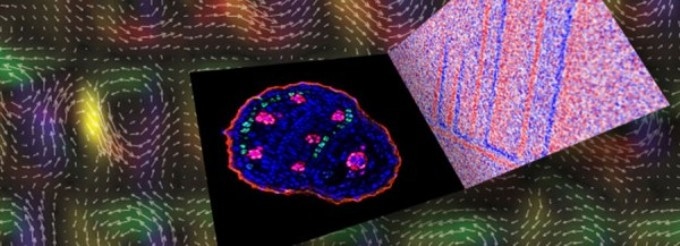Oct 24 2016
The U.S. Department of Energy's (DOE's) Argonne National Laboratory's Integrated Imaging Institute (I3), a portal to the lab's complete imaging capabilities, is opening its doors to researchers and partners in academia and industry looking to build knowledge and accelerate discovery and innovation through imaging.
 Argonne’s Integrated Imaging Institute is opening its doors to research, academic and industry partners interested in accelerating discovery and innovation through imaging. The institute combines Argonne’s broad suite of imaging and data analysis capabilities to provide researchers with structural, chemical and functional information from the atomic level to the macroscale. (Credit: Argonne National Laboratory)
Argonne’s Integrated Imaging Institute is opening its doors to research, academic and industry partners interested in accelerating discovery and innovation through imaging. The institute combines Argonne’s broad suite of imaging and data analysis capabilities to provide researchers with structural, chemical and functional information from the atomic level to the macroscale. (Credit: Argonne National Laboratory)
Argonne is one of a few places in the world that offers a broad suite of powerful imaging and data analytics capabilities to scientists, providing structural, chemical and functional information from the atomic level to the macroscale. Argonne experts have already been applying these capabilities to address compelling questions in energy, materials and the life sciences; with the launch of I3, these capabilities will now be open to partners outside Argonne as well.
The institute's core functions are to help potential partners identify the best imaging approaches for answering their scientific questions, and to coordinate the appropriate resources to develop and execute these approaches. I3 currently focuses on three key areas: multimodal imaging, imaging data science and advanced modeling and simulation.
"Seeing is believing when it comes to what can be accomplished with our one-of-a-kind suite of precise imaging tools and expertise, upon which we are always building," said Argonne Director Peter Littlewood. "We can support companies or other organizations seeking vital solutions to major challenges — in energy, environmental issues, security, healthcare, manufacturing and more — simply by enabling them to draw upon the exceptional strengths of a national lab like ours."
I3's integration of Argonne's diverse range of experimental and computational imaging capabilities simultaneously addresses the ongoing demand for complex, rich data in material and energy research.
"Since no single method can provide a complete picture of material function and structure, by combining Argonne's imaging capabilities, we are helping our partners collect and interpret data across multiple modes and scales, and ultimately gain a more holistic understanding of material behavior," said Argonne Distinguished Fellow Amanda Petford-Long, who leads I3.
I3 began as an initiative at Argonne two years ago that combined several lab-funded collaborative projects. Since its inception, it has been a valuable resource for researchers at the lab looking to combine different imaging approaches to solve complex problems.
One of the initial collaborations is called "Integrated Imaging to Understand and Advance Photocatalysis." This program uses multiple forms of microscopy to study the behavior of nanoparticles that display catalytic properties, with the aim of advancing the discovery of new catalysts for cleaner and more efficient fuel production.
"The funding and resources provided by I3 are allowing us to exploit Argonne's world-class capabilities of transmission electron microscopy, scanning tunneling microscopy and X-ray microscopy," said Ian McNulty, an Argonne senior scientist involved in the project. "The measurements we get from using these techniques reveal how catalysts work at the nanoscale as they have never been seen before."
The Modeling, Analysis and Ultrafast Imaging (MAUI) program, another collaboration that started through the initiative, has brought together researchers from across Argonne. Together, the researchers are combining experimental data with computer modeling and simulation to better understand energy transport via phonons, which are carriers of vibrational energy.
The integrated approach used in MAUI to predict, image and analyze phonon dynamics is helping participating researchers gain critical insights into processes that use this form of energy transport, like the dissipation of heat from next-generation semiconductors and the conversion of waste heat into electricity in thermoelectric materials.
"Taken separately, the experimental approach and modeling approach are good and informative, but there are things they can't do or tell us by themselves. And that's where the other approach can fill in," said Tom Peterka, a computer scientist involved in I3. "The experimental data helps validate the model, and the model itself can be used to explain what we're seeing in the experiments, which is why it's so valuable to have both approaches and different teams working on this project."
According to Petford-Long, the long-term goal of I3 is to collaborate with potential partners within Argonne and beyond to take advantage of the lab's unique collection of cutting-edge expertise and resources to continue pushing the boundaries of science.
Potential partners can connect with relevant researchers, read recent publications and learn more about I3 programs through the Integrated Imaging Institute website.